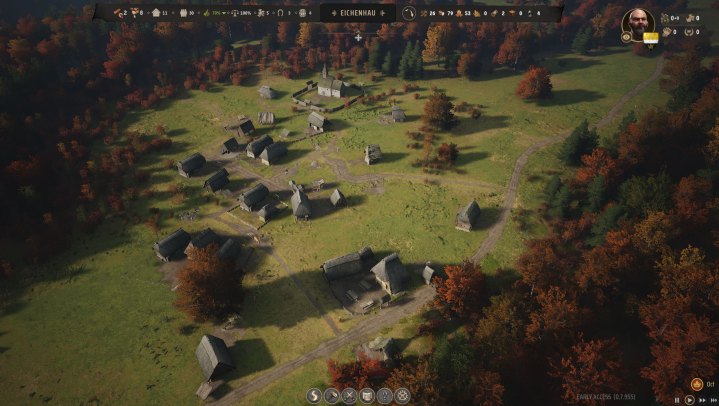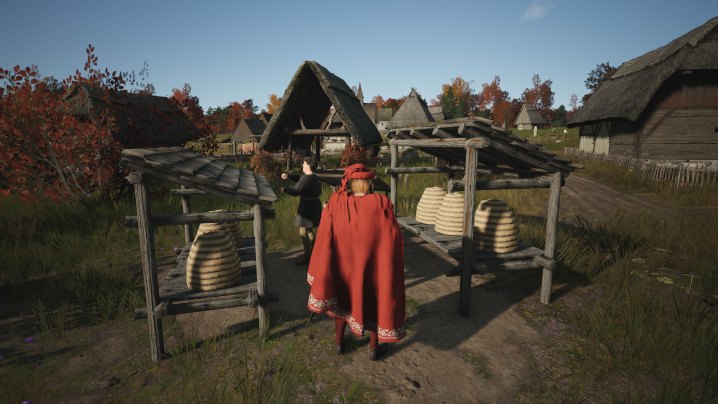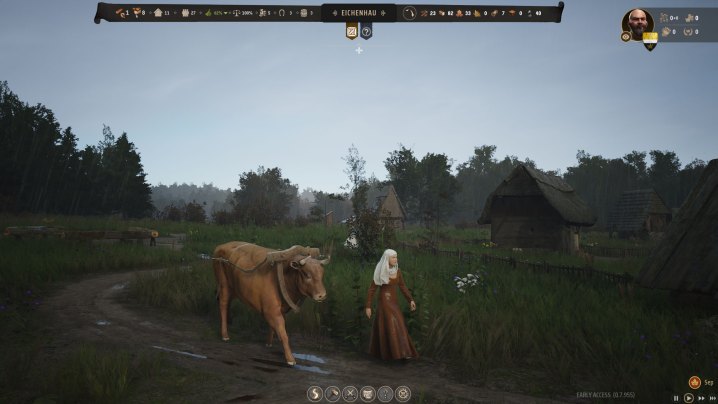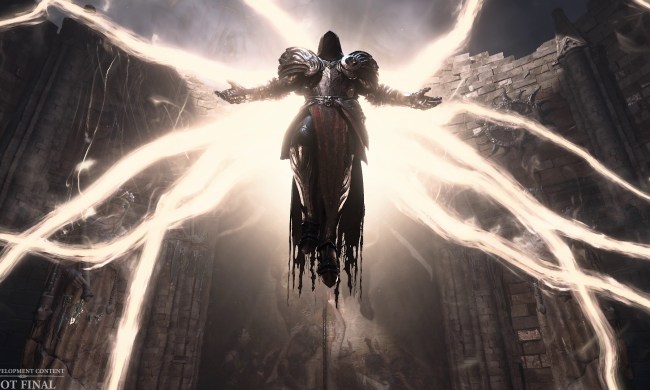
Manor Lords is the most wish-listed game on Steam at the time of this writing, and from my early impressions, it’s an excellent medieval village management simulator. It’s like Banished, but taken up a notch. But as impressive and fun as it is already, it’s still an Early Access game, which means getting it to run at its best requires a little finesse with the settings.
But you don’t need to spend hours painstakingly adjusting your seeings and benchmarking the game, because we’ve done that for you! After our rigorous testing, we’ve found the best settings for Manor Lords to give you peak performance so you can enjoy the grubby details of this dark ages setting.
The best settings for Manor Lords
Manor Lords is an immersive single-player experience, so while our settings recommendations are designed to improve performance beyond just setting everything to the maximum or leaving them at defaults, we aren’t going to make major sacrifices to visual quality just for a few frames per second (fps).
Part of the charm of Manor Lords is found in many of its little details — the dust kicked up by the oxen pulling logs around, the reflections in the puddles as you walk around your settlement. You can always turn these off if you find your system needs you to, but for the best blend of performance and visual appeal, these are what we’d recommend.

Display mode: Full screen, or borderless full screen if you want to be able to easily interact with something on another monitor.
Anti-Aliasing: If your graphics card supports DLSS, FSR, or XeSS, use those, as they make a big difference to performance and don’t have any obviously negative effects on visuals. Set them to Quality mode. If you can’t use them, TAA gives the best looking experience, while turning it off entirely will boost performance.
VSync: Off.
Max frame rate: Match your monitor’s maximum refresh rate or choose unlimited for maximum frame rates. You can use this to limit how hard your graphics card works, if you wish.
Sharpening: Off by default, but set it to medium if you find the anti-aliasing to be a little heavy-handed.
Shader quality: Medium is fine, but high looks a little bit nicer. If your GPU can handle it, High is best.
Shadow quality: High. While this is one you can usually get away with setting lower in other games, in Manor Lords, anything under High exhibits a really obvious shadow pop-in effect when moving around your village.
Postprocess quality: Medium or high. There’s not a huge difference to performance or visuals once you get beyond low.
Bounced light approximation: Medium.
Volumetric clouds: On if you feel like you’ll look up often; otherwise, off is fine.
Terrain texture resolution: I don’t like muddy textures when I’m walking around the village, so High feels best for this one.
View distance: High. It’s well worth keeping this as high as you can, as you typically play Manor Lords quite zoomed out. Doing so means that you can still see the people moving around, even from a bird’s eye view.
Grass density: High.
Grass distance: Ultra.
Foliage quality: Medium.
On a high-end gaming PC, these settings felt like they delivered the best mix of performance and visual beauty. It’s worth pushing for the latter there, too, as this game is quite beautiful, even up close. Using these settings will ensure that you get a game that looks and feels consistent, with no texture or shadows popping in overtly, while not pushing everything up so high that even high-end gaming rigs stutter and stumble.
Manor Lords system requirements

Manor Lords isn’t super demanding just to get it up and running, but if you want to play it at relatively high settings, you’ll need at least a recent-generation gaming PC. Here’s what the developer recommends.
Minimum system requirements
- CPU: Intel Core i5 4670, AMD FX-4350 or better
- RAM: 8GB
- Graphics: Nvidia GTX 1050 2GB, AMD RX-460, Intel Arc A380, or better
- Storage: 15GB
Some of the latest-generation CPUs with powerful onboard graphics — like AMD’s Ryzen 8000 — would be enough to beat these specifications. Just about anyone with any kind of gaming PC from the past decade should be able to play Manor Lords without much difficulty.
You could also drop a cheap graphics card into an old office machine and use it to play Manor Lords easily enough. Just make sure it isn’t one of these cheap GPUs.
Recommended system requirements
- CPU: Intel Core i5 7600, AMD Ryzen 3 2200G
- RAM: 12GB
- Graphics: Nvidia GTX 1060 GB, AMD RX-580, Intel Arc A580, or better
- Storage: 15GB
For more impressive performance and visuals in even a low-demand title like Manor Lords, you’ll need more of a powerful PC. But even here we see that you can get by with processors, graphics cards, and even memory that is very affordable. Most Steam gamers have a PC that can meet or exceed these specifications, giving this game a massive audience.
If you want to upgrade your GPU to really push performance in this game, though, check out the best graphics cards you can use today. It might be a little overkill, but they’re perfect if you also want to play more demanding games with ray tracing and other high-end visual effects.
Manor Lords benchmarks tested

Manor Lords performance will likely change a lot before its official 1.0 release – hopefully for the better. But if you’re keen to have play it right now in its Early Access state, then it’s good to know how well it actually performs. To test this, I recorded the fps while playing the game for five minutes in a small village that I’d been working on for about five hours. I mixed my time between up-close inspection of various buildings, and zoomed-out meta management. I also ran around as my lordly avatar for a minute or so to close out the test run.
Note that this cannot possibly be identical to run like it can be with a premade benchmark, but I tried to make it as repeatable as possible.
- CPU: AMD Ryzen 7950X3D
- Motherboard: Asus Crosshair X670E Hero
- Graphics card: AMD Radeon RX 7900 XTX
- Memory: 32GB Kingston Fury Renegade 5200MHz
We tested Manor Lords at our chosen settings at 1080p and 1440p, as well as at 1440p with all settings at maximum (leaving FSR on) for anyone who wants to enjoy all of the fancy visual effects it has to offer. I recorded frame rates, 99% minimum frame rates, and frame time averages (here’s why frame times are important).
| Average FPS | Average 99% FPS | Average frame time | |
| 1080p recommended settings | 104 | 77 | 9.9ms |
| 1440p recommended settings | 101 | 70 | 10ms |
| 1440p max settings | 99 | 68 | 10.6ms |
With only minor differences between our different settings, it’s perhaps no surprise that the performance results aren’t dramatic. However, it does suggest that if you have a powerful PC, you might as well turn the settings up to their higher options, as there is less performance to be found by really fine tuning your settings in this game than there are in some others where super high frame rates are more important (like Counter-Strike 2).
Want more tips for improving performance in Manor Lords? Check out our guide to PC performance tweaking for a more in-depth discussion of various in-game settings. You could also try overclocking your CPU if you’re feeling brave.



